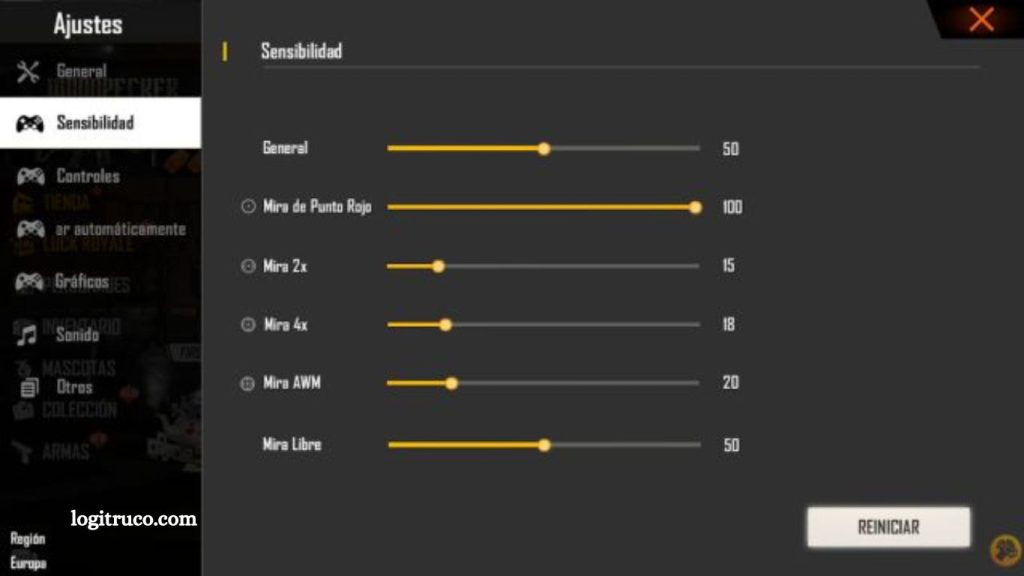Free Fire, a leading mobile battle royale game, demands precision and quick reflexes for optimal performance. One crucial factor in achieving this level of skill is fine-tuning the sensitivity settings. Proper adjustments can enhance aim accuracy, responsiveness, and overall gameplay experience, allowing players to react swiftly in intense combat scenarios.
This guide provides a comprehensive, step-by-step approach to adjusting sensitivity settings on iOS devices, ensuring smoother control and improved gameplay. By customizing your sensitivity, you can tailor the controls to suit your playstyle, giving you a competitive edge. Whether you’re a seasoned player or new to Free Fire, mastering these settings is essential for elevating your gaming experience.
Read More: How to Recover Your Free Fire Account: Proven Methods
Step 1: Access Sensitivity Settings on iOS
Begin by opening the “Settings” app on your iOS device from the home screen. Scroll down and locate the “Free Fire” option. Tap on it to enter the game’s specific settings. Within this menu, find and select the “Sensitivity” option to customize your settings.
Step 2: Adjust Motion Sensitivity
In the sensitivity settings, you’ll encounter several options. Start with motion sensitivity, which controls the speed of your character’s movement in response to joystick input. Use the slider to adjust: move it left for slower, more precise movement, or right for faster, more agile motion.
Step 3: Modify Crosshair Sensitivity
Next, focus on crosshair sensitivity. This setting dictates how quickly the crosshair moves when you slide your finger across the screen. Again, adjust the slider to suit your preference: slide left for slower, more precise aim or right for quicker, more responsive aiming.
Step 4: Test and Fine-Tune
After making adjustments, it’s essential to test the changes in-game. Play a few rounds to evaluate your comfort with the new settings. If the movement or aim feels too fast or too slow, return to the sensitivity settings to make further adjustments until you achieve the desired balance.
Step 5: Save and Apply Your Settings
Once you’re satisfied with the adjustments, be sure to save your changes. Look for the “Save” or “Apply” button within the sensitivity settings, tap it, and your modifications will be automatically applied the next time you launch the game.
Frequently Asked Questions
How do I access the sensitivity settings in Free Fire on iOS?
To access the sensitivity settings, open the “Settings” app on your iOS device, scroll down, and tap on the “Free Fire” option. From there, select “Sensitivity” to begin adjusting the settings.
What is motion sensitivity, and how should I adjust it?
Motion sensitivity controls how quickly your character moves when you adjust the joystick on the screen. You can modify it by using the slider; move it left for slower, more precise movement or right for faster, more responsive movement.
How do I adjust the crosshair sensitivity in Free Fire?
Crosshair sensitivity controls how fast the crosshair moves when you slide your finger across the screen. Use the slider to adjust it: slide left for slower, more accurate aim or right for faster, more responsive aiming.
How can I test my sensitivity settings after making adjustments?
To test your sensitivity settings, play a few games in Free Fire. Pay attention to how the movement and aiming feel, and make any necessary adjustments if you find them too fast or too slow.
Can I revert the sensitivity settings to the default?
Yes, you can revert to the default sensitivity settings by resetting the options within the sensitivity menu. Look for a “Reset” button, which will return all settings to their original values.
Conclusion
Adjusting the sensitivity settings on your iOS device is a simple yet effective way to enhance your Free Fire gaming experience. By customizing motion sensitivity and crosshair sensitivity, you can achieve smoother control, improve aim accuracy, and gain a competitive edge in the game. Remember to test your settings in-game and fine-tune them to match your playstyle.

